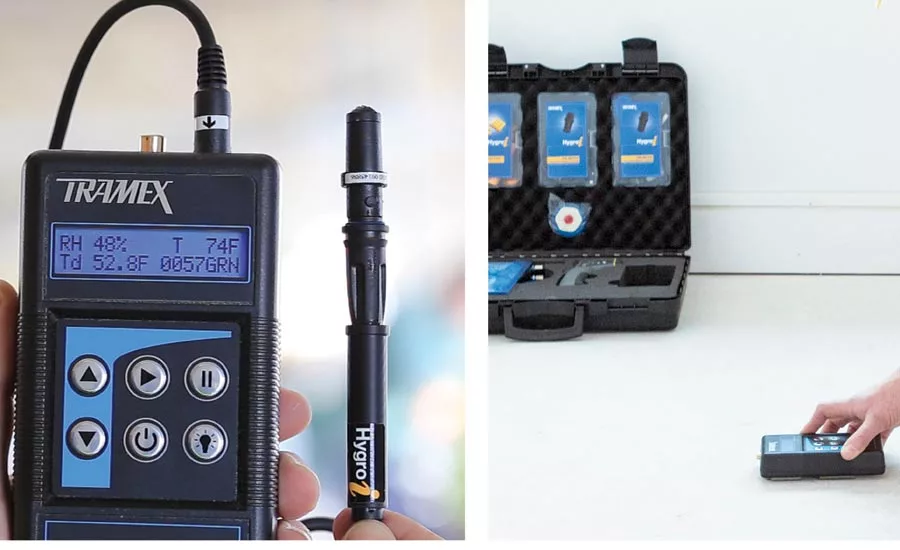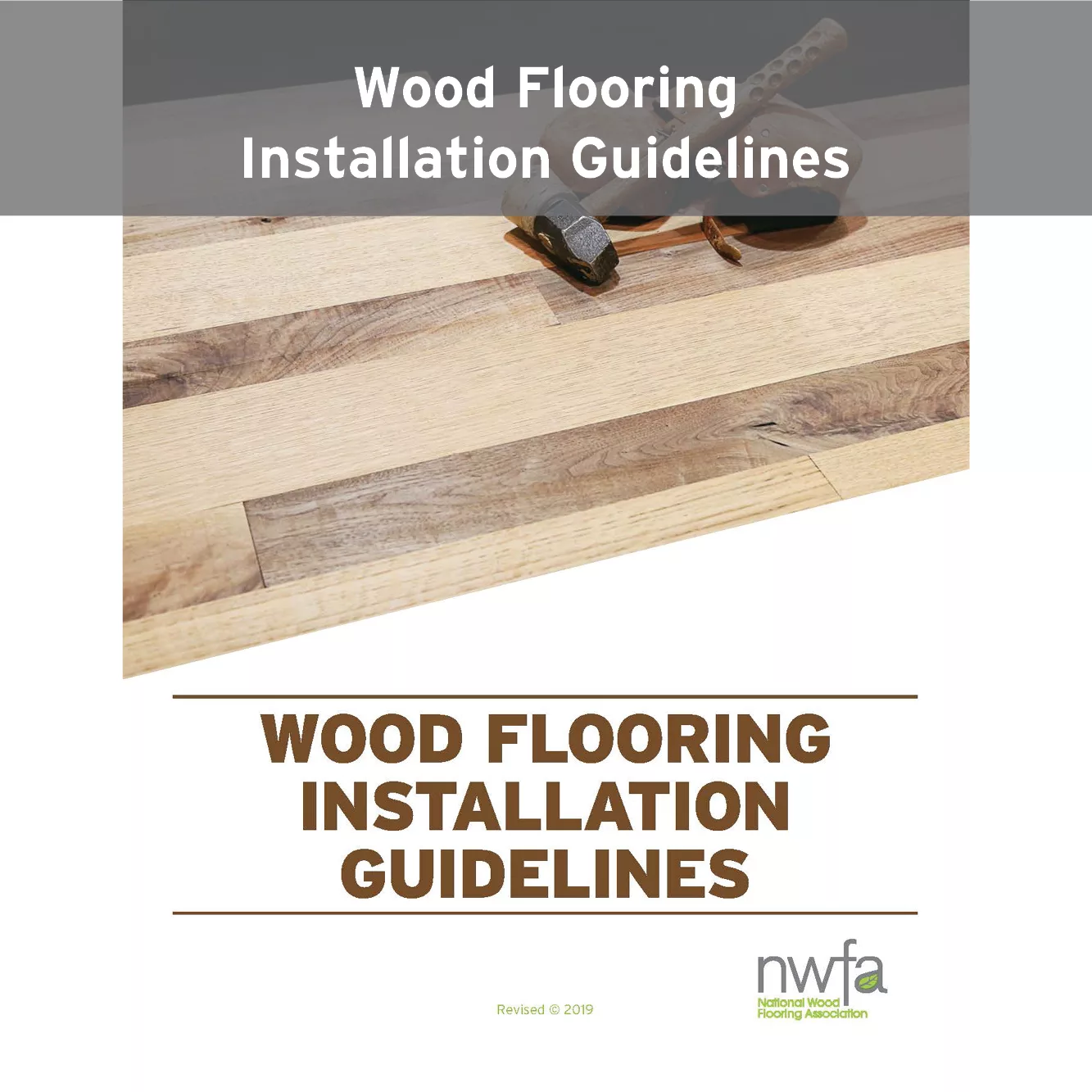As seen in Floor Covering Installer
Moisture Mitigation: Case Studies

Applying Schönox EPA Rapid—a two-part, epoxy-based Moisture Mitigation System suitable on porous, unheated concrete slabs to reduce moisture vapor emission rates from 100% RH or 25 lbs./1000 sq.ft./24 hours to suitable levels before applying Schönox underlayments.

Lignomat’s Ligno-DuoTec BW combines Lignomat’s unique dual-depth pinless technology with precision RH measurement.




Pictured is a basement installation of Loxcreen’s Protegga Tile Underlay, currently available only in Canada. The membrane features a vapor management system on the underside with air channels that direct moisture out to the sides. ProVa Joint strip is used to seal the joints where the edges of Protegga meet.








For the flooring industry, moisture is far from an obsolete concern. In fact, it should be at the forefront of every installer’s focus when it comes time to install a new floor or work with an existing one. FCI talked with industry experts about their own experiences with high-moisture projects and the importance of moisture testing while on them, as well as what to do after discovering a moisture issue is present and which products they think work best to help get the job done.
Article Index:
- Encountering High-Moisture Situations
- Importance of Moisture Testing
- What Comes Next
- Combatting the Moisture
Encountering High-Moisture Situations
Andrew Meyer, COO, Flooring Systems, said his company completes many moisture mitigation projects each year. They all have varying issues, but most can be categorized into three types: “New slabs with a short construction schedule, old slabs that do not have a functioning vapor retarder under the slab and replacements where the original installer failed to determine the moisture issue.”
Jason Hartmann, president, Jason Robert’s Services, expressed how with the current “hurry up, fast-paced, quick-turn, just get it done attitude,” moisture in floors is a huge problem and mostly never even budgeted for. “We encounter moisture vapor transmission issues on a regular basis whether it be an elevated slab or below-grade moisture—either one can cause failure to the flooring and even pose a potential health risk. Just recently, we had a project on a second floor, new construction with 99% relative humidity and the concrete was installed eight months ago, so throw your 30-day cure out the window.”
Peter Craig, concrete floor specialist, Concrete Constructives, also spoke of the urgency present on projects. “I have been investigating moisture-related flooring problems from coast to coast for more than 30 years. With today’s fast-paced construction schedules, on a very high percentage of new projects conventional concrete seldom has the opportunity to dry naturally to an acceptable condition within the project schedule.”
He continued, “There are also many projects where effective vapor retarder is not present directly below the slab, which allows moisture from the ground to enter and combine with free moisture in the concrete to reach levels that lead to a high pH condition developing at the surface of the slab, which can break down most conventional adhesives.”
Michael Moore, principal, Davison + Moore, shared a story of his own. “The irony here in Southern California is we live in a drought climate where it rained once in 146 days this year, yet it seems we’ve hardly met a slab that didn’t exceed our RH tolerances. For this reason, we test all of our on-grade projects, and even those larger projects above grade. Without this testing we run the risk of having installation and product failures. Those failures are painful for everyone and can be extraordinarily expensive, not to mention can damage our credibility in the marketplace. Rolling the dice is not a wise business strategy or a way to grow a company.”
Importance of Moisture Testing
“There are billions of dollars in failed flooring installations each year due to a lack of moisture testing or improper method or procedure of the testing,” noted Blake Portmann, president, Traction Control Systems.
According to Bob Seman, owner, Seman Floor Leveling Systems, there are companies out there that don’t even know to have moisture testing done. “It’s such an important thing to have tested on a job, especially since products nowadays are much different than they were 20 years ago. Today, environmental concerns have made [products] more VOC compliant, which also makes them more water-soluble and susceptible to moisture issues.”
Meyer stressed that moisture issues do not always result in a failure; however, this complicates everything. “There are still a few GCs, owners and architects that have not been involved in a failure. If this is the case, many times they simply fail to recognize the issue even if the moisture readings are high. They are also less likely to do any planning to minimize it and are likely to accuse the flooring contractor of just trying to sell an expensive mitigation system.”
“[Moisture is] such an important thing to have tested on a job ... Today, environmental concerns have made [products] more VOC compliant, which also makes them more water-soluble and susceptible to moisture issues.”
– Bob Seman
Buck Collins, president and founder, Collins Concrete Coatings, commented that as a resinous coatings installer, his primary goal is to offer lasting solutions to his customers when faced with substrate issues and resinous concrete coatings options.
“The success of any project begins with the accurate assessment of every substrate on an individual basis. Existing coverings, surface preparation, slab density and relative humidity or moisture levels are all key factors in determining the appropriate solution when making recommendations to our customers. The moisture content of any concrete surface must be accurately determined prior to consideration of any floor covering or coating.”
Duane Farley, sales manager, Loxcreen, had this to say: “The only problem with moisture testing is the fact that when you’re testing today it could be fine, but then one, two or even six months down the road it could be a problem. So, unfortunately, the test is only good at the time you’re doing it—it doesn’t tell you what has happened in the prior months or years.”
What Comes Next
After a high-moisture situation is discovered, the next steps vary based on the contractor/owner, expressed Meyer. “There are some projects where we are involved up front and work with them to try to avoid the issue. On these projects, the construction team will meet prior to the placement of the concrete and discuss how the concrete should be placed to provide the best chance of drying to required limitations.”
As for other projects, Meyer noted that testing may be started long before the project meets the conditions required by the testing standards, to provide preliminary results and make tentative recommendations with the associated costs. “Typically, there are discussions about effective ways to dry the substrate, alternative methods, etc.”
Craig said the next steps will vary based on several factors. “We select which field and laboratory tests need to be performed on a case-by-case basis.”
In one of Collins’ projects, visual inspection of the substrate determined that two methods of moisture detection would be necessary to accurately assess the levels of moisture within the concrete. “Calcium chloride and relative humidity probe tests were performed to measure the moisture levels, and as suspected the results exceeded the thresholds of most floor coverings or coatings. The customer was presented with the data, informed accordingly and educated about the benefits and insurance of an appropriate moisture mitigation system as an underlayment.”
According to Hartmann, Jason Robert’s Services looks to educate the contractor/end user early in the process. “Education during the planning phase is the key to a happy customer and well-orchestrated job.”
Portmann noted that once test results are in and reviewed by all parties, a decision is made to mitigate moisture or not based on the findings. “Typically this is done by email or a phone call. If the readings are questionable, we explain that these readings are merely a snapshot in time and can fluctuate throughout the year. We try to convince them to go the safe route and mitigate and that they’re buying an insurance plan that is far less expensive than the cost of flooring replacement.”
Combatting the Moisture
When it comes to inspecting wood flooring, Grete Heimerdinger, product manager, Lignomat USA, stated a moisture meter and a thermo-hygrometer are the tools an inspector needs. “Lignomat’s Ligno-DuoTec BW provides both functions. It is a dual-depth, pinless meter, which can be used as a thermo-hygrometer (with an RH BluePeg Probe).”
Pete Segaar, contractor, Leonard’s Carpet Service, discussed that after years of using different products, the company finally switched to the Franklin Titebond system, which included the 531 epoxy sealer and the 811 urethane adhesive. “The Titebond 531 eliminated the oily blush that occurred during the curing process and over the years Franklin has adjusted the drying time. We are currently using the Franklin system and have essentially eliminated all moisture issues with the hardwood flooring other than that caused by topical water intrusion.”
Farley swears by Loxcreen’s ProVa Flex product. “It’s an uncoupling membrane that has open channels on the underside of the membrane, which allows for the moisture to move out so it’s not being concentrated in one area of the floor.”
Currently on several projects with significant RH issues, Moore is using rolled moisture barriers from Traxx Corp. “That’s where we’ve been fortunate to have products like TraxxShield100. Instead of shot blasting the slab, all we are doing is sanding, cleaning and priming the existing slab. It’s faster, cleaner and a lot less expensive. After this step, we simply roll out the TraxxShield100, taping seams and that’s it—we’re ready for product installation.”
Portmann stated, “We use Ardex MC Rapid, MC Plus or MC Ultra. They are all 100% solids epoxy systems.”
Hartmann added, “Over the years we have used many products but today we have found Laticrete’s Drytek MVB to be the most user-friendly, and when it comes to their technology they are cutting edge.”
Collins also used a prime coat of Laticrete’s Drytek Moisture Vapor Barrier to mitigate the existing high levels of moisture discovered in his project. “We then proceeded with installation of Spartacote’s Alpenglow Metallic Resinous flooring system. The project was a success with nothing less than stellar results and the installation was completed within three days. Since completion the customer has reported that humidity levels within the space have lessened and that overall air quality has improved.”
Looking for a reprint of this article?
From high-res PDFs to custom plaques, order your copy today!













